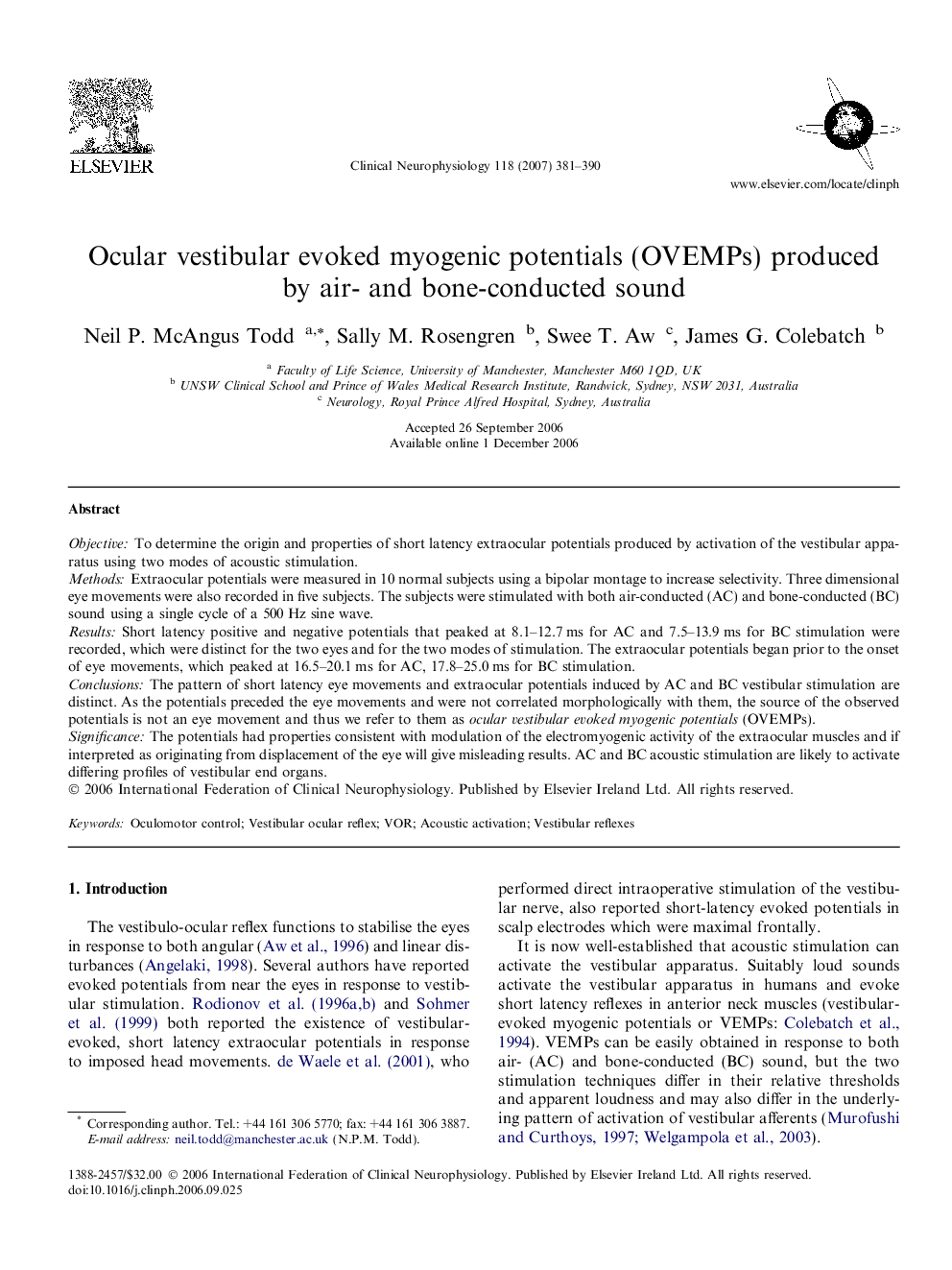| Article ID | Journal | Published Year | Pages | File Type |
|---|---|---|---|---|
| 3048020 | Clinical Neurophysiology | 2007 | 10 Pages |
ObjectiveTo determine the origin and properties of short latency extraocular potentials produced by activation of the vestibular apparatus using two modes of acoustic stimulation.MethodsExtraocular potentials were measured in 10 normal subjects using a bipolar montage to increase selectivity. Three dimensional eye movements were also recorded in five subjects. The subjects were stimulated with both air-conducted (AC) and bone-conducted (BC) sound using a single cycle of a 500 Hz sine wave.ResultsShort latency positive and negative potentials that peaked at 8.1–12.7 ms for AC and 7.5–13.9 ms for BC stimulation were recorded, which were distinct for the two eyes and for the two modes of stimulation. The extraocular potentials began prior to the onset of eye movements, which peaked at 16.5–20.1 ms for AC, 17.8–25.0 ms for BC stimulation.ConclusionsThe pattern of short latency eye movements and extraocular potentials induced by AC and BC vestibular stimulation are distinct. As the potentials preceded the eye movements and were not correlated morphologically with them, the source of the observed potentials is not an eye movement and thus we refer to them as ocular vestibular evoked myogenic potentials (OVEMPs).SignificanceThe potentials had properties consistent with modulation of the electromyogenic activity of the extraocular muscles and if interpreted as originating from displacement of the eye will give misleading results. AC and BC acoustic stimulation are likely to activate differing profiles of vestibular end organs.
